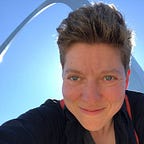Bringing Barnes VR to Philadelphia Free Libraries
I will admit that I went into into this project with some trepidation. We’ve all seen the discourse surrounding VR projects in the sector — there’s nothing quite like seeing an all out brawl on social media as you are in the implementation stages of your own initiative. I was skeptical going in, but I watched as this project became one of the most impactful of my career. I don’t say that lightly — it has been really exciting to watch this unfold. We’re going to roll this story out over a number of posts and I hope you’ll follow along. I promise it’s worth it and I hope the ending surprises you as much as it did me.
Barnes VR at Neighborhood Libraries
We’ve been piloting a partnership with the Free Library of Philadelphia to use Virtual Reality (VR) headsets to bring the Barnes collection outside of our walls and directly into the neighborhoods of audiences we are trying to reach.
An engagement team brings the headsets to neighborhood libraries and meetups are held to introduce and talk about the Barnes collection. 360-degree photography of our collection galleries is used in the headsets and participants are encouraged to wander through the galleries telling us what catches their eye.
Following the meetups, participants are invited to visit the Barnes at no charge in fully escorted groups. We meet with the group at the library and take public transportation together. Upon arrival at the Barnes, the same teaching team is on site to guide the visit. The participants’ interests — those things that that caught their eye during the VR experience — are used to shape the in-gallery visit.
Why We’re Doing It
At the Barnes, our mission is grounded in the democratic principle laid out by our founder, Albert C. Barnes, who believed that the arts should be accessible to people from all education levels and cultural backgrounds. Our move to the Benjamin Franklin Parkway in 2012 was intended to make the institution broadly accessible because our location would be more central. Upon reflection, our pricing structure is affordable to some, but a barrier for many. Our building, while beautiful, can be daunting to new audiences who struggle with its formalism. As a result, we now serve exponentially more people, but they are of a very similar socio-economic status as those who visited us before the move.
As we think about the Barnes’s future, and particularly our founder’s commitment to education for all, it has become clear that our efforts must focus on engaging audiences that reflect the city’s diversity. We are mindful that Philadelphia is a majority minority city of 1.5 million people with an average household income of $34,000 per year. Knowing that familiarity, affordability, and transportation are often barriers to visitation, we saw enormous opportunity in testing the idea of “museum as hub” to engage the citizens of Philadelphia directly in their communities, so that the Barnes could become as accessible and inclusive as possible.
Worth noting, too, is the Barnes has historically always been a teaching institution. Our founder used to teach his factory workers by bringing paintings directly into the workplace — the workday was split between 6 hours for work and 2 hours for classes. Eventually, when he established his collection in Merion, it was done so as school. Our class program still continues to this day and has recently expanded to include a needs-based scholarship program.
We started to ask ourselves, could we meet our communities where they are, facilitate deep connection, and honor the very core of where this institution began? Our answer was to create a mobile program of VR headsets, combine it with a live teaching team, and utilize neighborhood libraries to connect with our communities.
In the next few posts we’ll talk about how we formed the program, the technical implementation, and we’ll hear from Nicole Caruth — one of the consultants working with our teaching team. We’ll also be releasing statistics, participant feedback, and our teaching tenets developed specifically for this initiative.
The Barnes VR in Neighborhood Libraries pilot project was funded by the Barra Foundation as part of their Catalyst Fund. The program will move forward throughout 2019 under the Knight Center for Digital Innovation in Audience Engagement at the Barnes. Read more about the project in this series of Medium posts.
Project Team —
Barnes Foundation: Shelley Bernstein, Consulting Creative Technologist; Steve Brady, Chief Technical Officer; Ana Gamboa, Special Project Coordinator; Ann Moss, Art Team; Jihan Thomas, School Programs Outreach Coordinator; Alicia Mino, Youth and Family Program Coordinator; and Barbara Wong, Director of Community Engagement.
Free Library: Andrew Nurkin, Deputy Director, Enrichment and Civic Engagement; Kalela Williams, Director of Neighborhood Library Enrichment Programming
